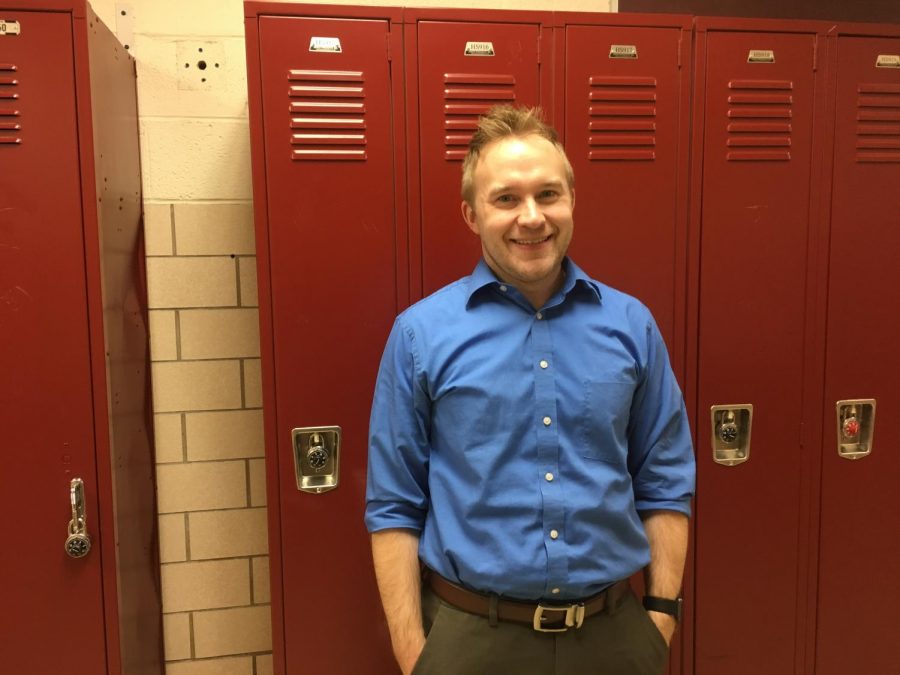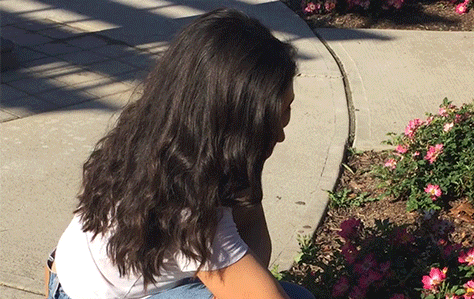Life in Keda: the story of two years in the Peace Corps
Photo Credit: Kobie Tsiang
History teacher Tom Lyon poses in the halls of Glen Rock High School on Feb. 6.
February 12, 2018
Tom Lyon wakes up and sees his own breath, frozen, to the top of his sleeping bag. Snow has piled high enough for about fifteen New Jersey storms, and the town will spend approximately two weeks digging themselves out. After waking up, he takes his malaria pill, and goes to chop wood for the day with his host father.
This is a summary of history teacher Tom Lyon’s typical morning during his two years in the Peace Corps. He taught grades K-12 English at one of the town’s schools, along with tutoring. Lyon joined the Peace Corps in 2010, but the roots of joining were planted as early as childhood.
“My whole life I’d always wanted to be in the military. My brother’s in the military, and I kind of idolized him when I was a kid, and I always believed in serving your country and giving back,” recalled Lyon.
During college Tom spent some time in different majors. With the stock market crash of 2008 creating less and less teaching jobs, there was no better time to join the Peace Corps. After gaining his master’s in teaching, Tom sent in an application in December of 2010. By May, he was on his way to Keda, Georgia where he would spend the next two years.
“I was always sort of fascinated by that area of the world, the iron curtain, the Soviet Union,” said Lyon
Once arriving in Keda, Lyon worked at one of the larger schools in the area with about 200 kids in total. With no copiers, projectors, textbooks, or even heat, a majority of his stateside training went out the window. To teach English directions, the class followed a desk maze spanning a whole classroom. Two manilla folders that circulated the class of up to 60 kids at a time served as a game of shoots and ladders. Along with some fun activities,Lyon created an English curriculum for Kindergarten.

Posing with Georgian students during their version of prom, Tom Lyon smiles at the “Bolozari” (‘final bell) dance. ‘
In a small village like Keda, teacher-student relationships could be more informal. After school Lyon would be invited to a student’s house to eat dinner. Other times he would eat at a Supra, a traditional Georgian feast. Tables packed with an assortment of homemade meals filled the air with mouthwatering smells and could feed guests for a few hours to three days. The lively celebration was orchestrated by a Tamada or a toastmaster. Whoever was chosen would give multiple toasts throughout the night (subjects including friendship, peace, country, etc). In a small room of close friends, this may be a fun experience. However, in a large wedding hall it was nerve wracking and extremely awkward.
Supras are completely prepared, served, and cleaned by women. Gender roles in Georgia are all around very rigid, in fact. One of the service projects the Peace Corps (and Lyon) accomplished whilst they were in Keda was a fitness center for women, giving them an opportunity to leave the home. Along with this, many different experts came in to discuss women’s health issues.
In his freetime, Lyon would partake in the local villages daily entertainments, including holidays. During one of the largest holidays in Keda called Giorgoba, Lyon was told he would be performing a great honor. Walking up a mountain, he befriended a small goat. Once he reached the top of the mountain, he was handed a knife. “Kill the goat,” he was commanded. A confused look washed across his face, followed by a grim realization: he was going to kill the goat. With his knowledge from years working on a turkey farm, Lyon performed one of the many feats of willpower and surprised everyone on the mountain that day.
After returning to the U.S., Lyon had to get used to being back at home. After several stressful trips to Walmart, he began his transition back into life in America.




